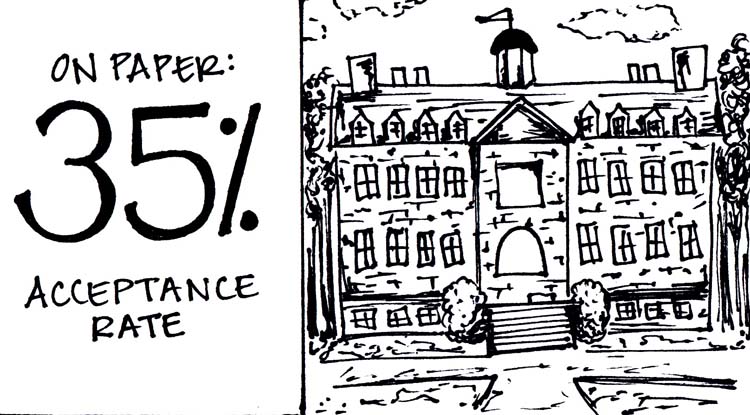Great news from the Office of Undergraduate Admission — The class of 2016 is by far the best class ever admitted. There’s a NASA astronaut-in-training, a girl who braided the Queen of England’s hair and the son of Christ.
Wait.
Didn’t we admit an astronaut last year? I’m pretty sure I heard that somewhere. Come to think of it, there is a guy who wears a robe and sandals in my Introduction to Religion class.
My point is that the College of William and Mary continues to be more selective every year. It doesn’t seem to matter just how impressive this year’s freshmen are, because next year’s class will somehow, inevitably, top this year’s. It’s not just the College either, it’s a sweeping epidemic: Colleges and universities are bending over backward to appear more selective.
Look at the ever-so-prestigious Harvard University, where an excited group of admission officials hurriedly announced they had set a new all-time low acceptance rate: 5.9 percent. What they don’t tell you is that Harvard’s number of applicants dropped 1.9 percent from a year ago, and that Harvard handed out 100 fewer acceptances.
Not only are universities trying desperately to reject as many applicants as possible, but they are willing to manipulate data so as to bring that all-important acceptance rate to an all-time low. Why? All for the sake of reputation.
This new trend has negative consequences. These impossibly low admittance numbers force applicants to burn themselves out in high school in order to be that perfect applicant. More dangerously, some applicants judge universities solely on admission rates.
Let’s say John Doe from Indiana is looking at the College and at Harvard. He’s done all he can in high school — I’m talking AP classes, participation in about 20 clubs (nine of which he currently runs), single-handedly saving the community from a coal plant and owning a key to the city. He’s a prime candidate.
John Doe chooses Harvard over the College for one reason — Harvard’s 5.9 percent acceptance rate. What John Doe doesn’t realize, and can’t realize while he’s still in high school, is that once he’s settled down in his cramped dorm, all his past achievements don’t matter.
Our wonderful, prime-example, perfect applicant finds himself completely unhappy — his key to the city does no good in a school full of people who all have similar keys. John Doe is unhappy because he didn’t have the foresight, and because the college admittance process denied him the foresight, to see what really matters: What college life is actually like after the admission letter.
As universities strive to look selective, applicants lose sight of the importance of choosing a college for its worth. They choose for a number, not for the Sunken Garden and President Reveley and the Green Leafe. Don’t let your friends be like John Doe from Indiana.

